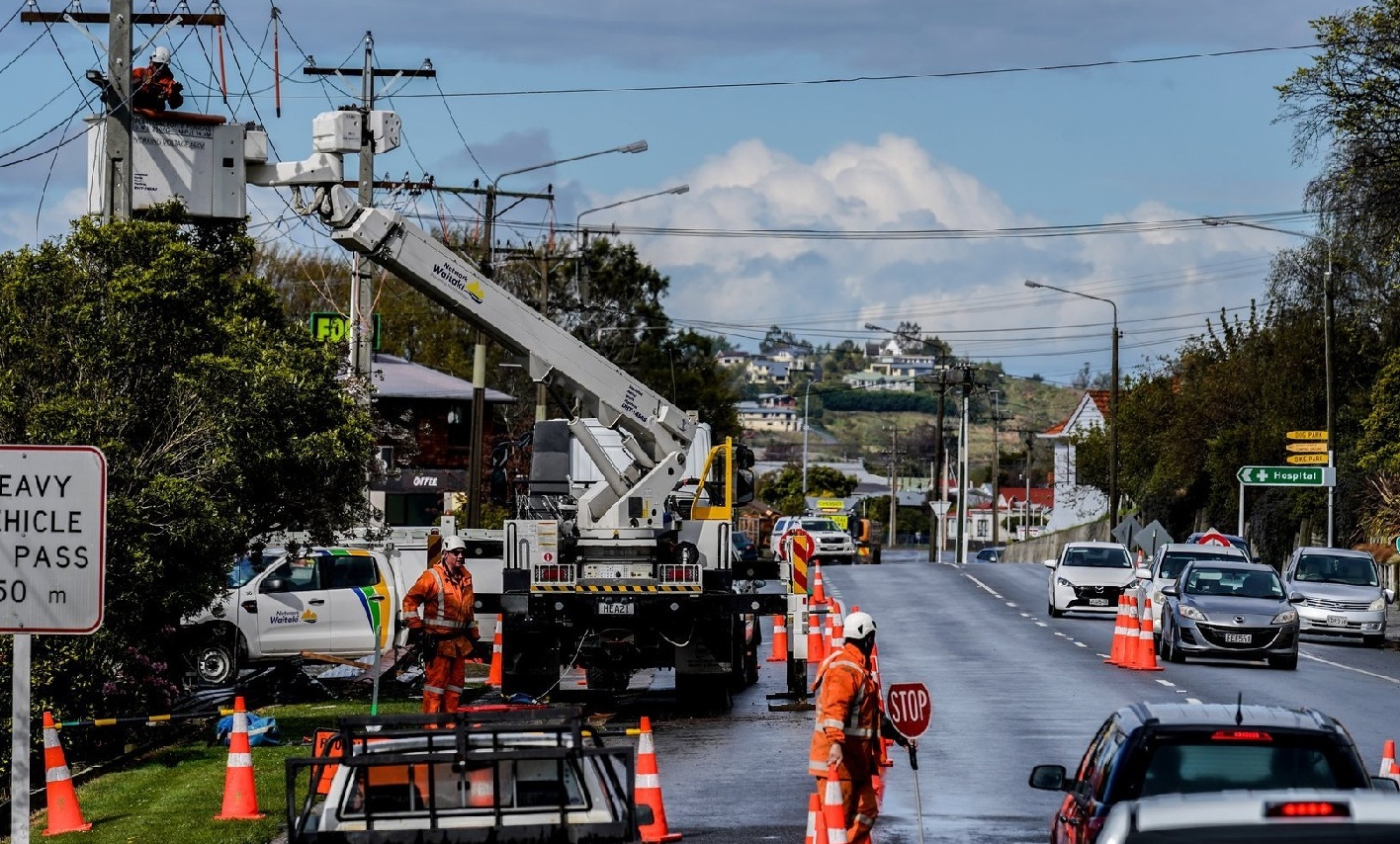Emergency Management Southland (EMS) says it is likely the state of emergency in Southland and Clutha will remain in place into next week.
Several thousand homes are still without power after severe weather downed trees and powerlines and shut down over 100 cellphone towers last week.
PowerNet chief executive Paul Blue said restoring electricity to the thousands of homes still cut off in Southland and Otago would slow as crews addressed more extensive damage.
Blue said the electricity supplier had nearly 150 people on the ground working to reconnect cut-off homes and cell towers in its territory.

"Powernet's focus today is to reach more of our outlying communities. They have extra manpower coming to assist in many of our towns including Inch Clutha, Kaitangata, Warepa, Clinton, Clydevale, Milton, Taieri Mouth, Toko Mouth and Hillend, Owaka, waihola, Lawrence, Lovells Flat, Waitahuna."
Blue earlier asked for the public's patience as crews worked through the more challenging repairs.
"The outages that we will be trying to resolve start to become the ones that take more time.
There will be instances where, while power has gone back on, sometimes we will might need to turn it off or order to make [areas] safe and to get other people on as well - particularly in some of the areas where there has been some fairly widespread devastation around trees going into poles and wires."
Blue said the company was now prioritising restoring power to cellphone towers and rural addresses - particularly where dairy farms were located.
"We now move to looking - at a more granular level - at what is the damage and we will turn on the ones that have minimal damage. The ones that have more extensive damage, they're the ones that will take longer. We are working closely with a lot of the telco providers around what sites we will be [able] to liven up - and where we aren't - they will put generators."
EMS group controller Lucy Hicks said nearly 40 generators were flown into the area in an Air Force Hercules to help power up cellphone towers on Saturday afternoon.
"The network of cell towers is quite wide. About 130 have been impacted by the storm across Southland and Otago. [Repair crews] have reduced that number down, but there's still quite a few to go, and so those generators are primarily focusing on getting those cell towers back up and running."
She said 13 additional emergency management staff were aboard the flight to relieve teams who had been working "around the clock" since Thursday last week.
Southland Mayor Rob Scott says the district is getting to "the tail end of the main issues".
He is heading west to Orepuki, then up to Ohai and Nightcaps to check on all of those communities today.
"We're still focusing on just making sure that everyone's kind of in good shape and our communities are all being looked after," he said.
Earth Sciences (formerly Niwa) has warned that heavy snow, rainfall, powerful winds, and plunging temperatures will hit the South Island on Monday.
MetService has issued a raft of severe weather warnings, taking in most of the middle and upper South Island and the lower to middle North Island.
Scott said that was something the council would be preparing for today.
Mobile coverage disrupted
The head of the Telecommunications Forum says people attempting to dial 111 in areas with disrupted mobile coverage may need to wait up to 50 seconds for a connection.
Southland residents have reported problems getting through to emergency responders after last week's severe weather shut down nearly 130 cellphone towers.
Paul Brislen says crews have been restoring up to 25 towers each day.
He said a recent issue in Australia showed certain devices were slow to connect to emergency networks.
He said the problem has not been fully tested in New Zealand, but emergency callers should stay on the line.
Meanwhile, the Otago Regional Council said dairy farmers in areas hit by power cuts could be forced to make the call to dump milk stocks.
They said they did not have concerns if milk had to be discharged into effluent storage - or on to land - but farmers must notify the council for follow up.
Acting general manager environmental delivery Simon Wilson said if effluent ponds were full, farmers should only dispose of milk onto land where tile drains and waterways would not be affected by runoff.
He said the council had postponed dairy farm inspections until November 3 but would reassess the situation early next week.













